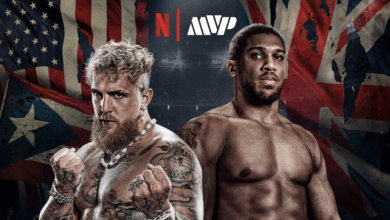MMA: From Underground Fights to Global Phenomenon
Mixed Martial Arts (MMA) has seen a meteoric rise from its humble beginnings to becoming one of the most popular combat sports globally. This sport, which combines techniques from boxing, wrestling, jiu-jitsu, Muay Thai, and various other martial arts, has captivated audiences with its raw intensity and strategic depth. Understanding the evolution of MMA provides insight into its current popularity and its cultural impact.
Early Beginnings and the Birth of UFC
MMA’s origins can be traced back to ancient times when various civilizations pitted their fighters against each other in combat sports. However, the modern incarnation of MMA began to take shape in the late 20th century. In 1993, the Ultimate Fighting Championship (UFC) held its first event, aiming to determine the most effective martial art in a real fight situation. These early events had minimal rules, often leading to brutal and controversial bouts that drew both fascination and criticism.
The first UFC events were a stark contrast to today’s regulated and polished productions. Fighters from various disciplines would step into the octagon with minimal preparation for the diversity of techniques they would face. This period was marked by the dominance of Brazilian Jiu-Jitsu, as Royce Gracie’s grappling prowess proved that technique could overcome brute strength.
Regulation and Acceptance
The brutal nature of early MMA led to significant pushback from politicians and the public, with many calling for its ban. To survive, the sport underwent significant changes, adopting a set of unified rules designed to ensure fighter safety and bring legitimacy to the competition. Weight classes were introduced, along with time limits and a more comprehensive list of fouls. These changes helped MMA gain acceptance and grow beyond its niche audience.
The early 2000s marked a turning point for MMA as it began to gain mainstream popularity. The reality TV show “The Ultimate Fighter” played a crucial role in this shift. The show, which followed aspiring MMA fighters living and training together while competing for a UFC contract, brought the sport into the living rooms of millions of viewers and showcased the dedication and discipline of the athletes.
The Role of Promotions
As MMA grew, so did the number of promotions worldwide, each contributing to the sport’s development. Organizations like PRIDE Fighting Championships in Japan introduced unique styles and rule sets, adding to the sport’s diversity. PRIDE’s emphasis on spectacle, combined with its roster of international stars, helped broaden MMA’s appeal and influence.
The UFC continued to lead the way in terms of global expansion, purchasing rival promotions like PRIDE, Strikeforce, and World Extreme Cagefighting (WEC). These acquisitions not only consolidated top talent under one banner but also expanded the UFC’s reach into new markets.
Rise of Superstars
The rise of MMA superstars has been instrumental in the sport’s growth. Fighters like Chuck Liddell, Georges St-Pierre, Anderson Silva, and Ronda Rousey became household names, transcending the sport and becoming cultural icons. Their charisma, fighting style, and dominance in the octagon captivated audiences and drew new fans to MMA.
In recent years, Conor McGregor has epitomized the crossover appeal of MMA athletes. His brash personality, combined with impressive in-cage performances, has made him one of the most marketable athletes in the world. McGregor’s bouts, especially his 2017 boxing match against Floyd Mayweather, have broken pay-per-view records and brought unprecedented attention to MMA.
Global Expansion and Acceptance
MMA’s global expansion has been one of its most significant achievements. The sport has found enthusiastic audiences in markets like Brazil, Canada, the United Kingdom, and Russia. The UFC’s efforts to host events in various countries have helped cultivate local talent and fan bases, further embedding MMA into the global sports culture.
Additionally, the incorporation of MMA into the training regimens of law enforcement and military units worldwide has added a layer of legitimacy to the sport. The practicality and effectiveness of MMA techniques have proven valuable in real-world self-defense situations, enhancing the sport’s reputation.
The popularity of MMA has also opened avenues for related industries to thrive. For instance, Betplay Casino and other online betting platforms have capitalized on the excitement of MMA events by offering fans the opportunity to engage with the sport in a new way. Betting on MMA fights adds an extra layer of thrill for fans, allowing them to test their knowledge and predictions against the outcomes of high-stakes bouts.
The Modern Landscape
Today, MMA is a billion-dollar industry with events regularly broadcasted to millions of fans around the world. The UFC remains the dominant promotion, but organizations like Bellator MMA, ONE Championship, and the Professional Fighters League (PFL) offer alternative platforms for fighters and fans alike. The sport continues to evolve, with advancements in training methods, nutrition, and sports science contributing to the athletes’ performance and longevity.
The rise of digital media and streaming platforms has also played a crucial role in MMA’s modern landscape. Fans can now access a wealth of content, from live events to behind-the-scenes documentaries, enhancing their connection to the sport and its athletes.
In conclusion, the evolution of MMA from underground fights to a global phenomenon is a testament to the sport’s enduring appeal and the dedication of its athletes and promoters. As MMA continues to grow and evolve, it promises to captivate future generations of fans and maintain its position as one of the most dynamic and exciting sports in the world.




